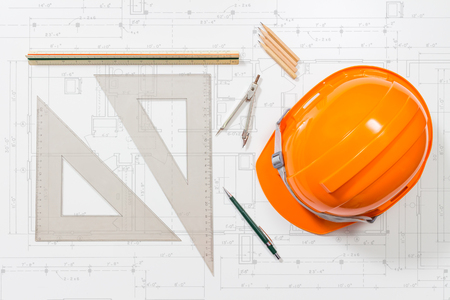1. Understanding Feng Shui Principles for Modern American Homes
What is Feng Shui?
Feng Shui, an ancient Chinese practice, is all about creating harmony and balance in your living spaces. The goal is to promote positive energy, or “chi,” which can enhance well-being, happiness, and even prosperity. While it started thousands of years ago, Feng Shui has found its way into homes across the United States, especially those with open floor plans.
Why Focus on Open Floor Plan Homes?
Open floor plan homes are very popular in America because they create a sense of spaciousness and connection between family members. However, this design can sometimes make it challenging to define functional areas and maintain energetic balance. That’s where Feng Shui enhancers come in—they help you organize your space in ways that support both flow and function.
Main Feng Shui Principles for Open Floor Plans
| Principle | How It Applies to Open Floor Plans |
|---|---|
| Balance of Elements | Use different textures and colors to represent earth, water, fire, metal, and wood throughout the open space. |
| Defined Spaces | Create zones for living, dining, and working using rugs, furniture placement, or lighting. |
| Smooth Energy Flow | Avoid clutter and keep pathways clear to let energy move freely from one area to another. |
| Command Position | Arrange important furniture (like your sofa or desk) so you have a clear view of the main entrance without being directly in line with it. |
Simple Tips for Applying Feng Shui at Home
- Add plants to bring in fresh energy and life.
- Use mirrors thoughtfully to reflect light and expand the sense of space.
- Choose calming colors that promote relaxation and focus.
Key Takeaway
By understanding these basic Feng Shui principles, you can start turning your open floor plan home into a more comfortable, balanced, and inviting place—right here in America!
2. Identifying Energy Flow Challenges in Open Spaces
Open floor plan homes are a staple of modern American living, offering flexibility, more natural light, and an inviting sense of spaciousness. However, from a Feng Shui perspective, these open layouts can create unique energy flow (Qi) challenges that can affect comfort and well-being. Understanding these issues is the first step to creating a harmonious environment.
How Open Floor Plans Affect Energy Flow
In traditional Feng Shui, walls and doors help contain and direct the flow of energy throughout a space. Open layouts, on the other hand, often lack clear boundaries between living, dining, and kitchen areas. This can lead to:
- Energy Dissipation: Qi can scatter too quickly without defined pathways or barriers.
- Lack of Focus: With few physical separations, its harder for each area to have its own “purpose” or energy signature.
- Overstimulation: Noise, activity, and movement can easily travel across the space, leading to restlessness or distraction.
Practical Considerations for Maintaining Harmony
To address these challenges, it’s important to thoughtfully organize your open space while keeping both aesthetics and energy balance in mind. Here’s how you can start:
1. Define Zones with Furniture and Decor
Use furniture arrangements, rugs, lighting, and artwork to visually separate different areas without building walls. This helps anchor energy and gives each zone a distinct function.
| Area | Common Enhancers | Feng Shui Tip |
|---|---|---|
| Living Room | Sofa sets, coffee table, area rug | Create a conversation circle to encourage positive Qi flow |
| Dining Space | Dining table & chairs, pendant light | Add a centerpiece or mirror to enhance abundance energy |
| Kitchen Area | Island/bar stools, plants | Keep counters clutter-free for smooth energy movement |
2. Mind the Main Pathways
Avoid placing large furniture pieces in main walking paths. Clear pathways allow Qi to move gently but steadily through the home instead of rushing or stagnating.
3. Control Energy Flow with Soft Barriers
If certain areas feel too exposed or chaotic, use bookshelves, screens, or tall plants as “soft dividers.” These elements subtly guide energy without blocking light or openness.
4. Balance Yin and Yang Elements
An open layout can sometimes feel too active (yang) due to noise and movement. Add yin features—such as soft textiles, warm lighting, and calming art—to bring equilibrium.
Quick Tips for Harmonious Open Spaces:
- Add round tables or rugs to soften sharp angles.
- Place greenery near entrances to freshen incoming Qi.
- Use color accents strategically to energize or calm specific zones.
- Keeps mirrors positioned so they reflect beautiful views—not clutter or entry doors directly.
By carefully observing how people move through your space and how each area feels at different times of day, you’ll be able to spot where energy is pooling or escaping—and make simple adjustments for greater harmony.

3. Popular Feng Shui Enhancers and Their Functions
Bringing Good Energy into Open Floor Plans
Open floor plans are a staple in many American homes, offering spaciousness and flexibility. However, the lack of walls can sometimes make it tricky to create balanced energy flow, or “chi.” By integrating popular Feng Shui enhancers, you can not only boost positive vibes but also add style to your home that fits right in with modern American décor.
Common Feng Shui Enhancers for American Homes
| Enhancer | Main Function in Feng Shui | How to Integrate in Open Floor Plans |
|---|---|---|
| Mirrors | Expand space, reflect light, redirect energy flow | Hang decorative mirrors to visually enlarge living areas and bring more natural light deeper into the space. Avoid placing mirrors directly facing the front door. |
| Plants | Promote growth, health, and vitality; improve air quality | Add low-maintenance indoor plants like snake plants or pothos on shelves or as corner accents. Group small plants on kitchen islands or side tables for a fresh look. |
| Water Features | Attract abundance and calm; enhance tranquility | Consider compact tabletop fountains on entryway consoles or near windows. Choose sleek designs that match contemporary interiors. |
| Crystals | Balance energies, protect against negative influences | Display amethyst or clear quartz clusters on coffee tables or bookshelves. Use crystal bowls as eye-catching décor pieces. |
Tips for Blending Feng Shui Enhancers with American Style
- Stay Neutral: Choose enhancers in neutral tones or minimalist designs to suit modern and farmhouse-style homes alike.
- Create Zones: Use plants or low bookcases to subtly divide open spaces without building walls—helping energy flow while maintaining openness.
- Add Personal Touches: Select enhancers that reflect your personality, such as unique crystal shapes or statement planters, so your home feels welcoming and authentic.
Easy Integration Ideas:
- A stylish mirror above a fireplace can become both a focal point and an energy enhancer.
- A row of potted herbs by the kitchen window combines healthy chi with practical use.
- A small water feature near the living area invites serenity without overwhelming the room.
- An elegant bowl of tumbled stones on a dining table adds color and positive energy for gatherings.
4. Strategic Placement of Enhancers in Open Floor Plans
Open floor plans are popular in American homes for their spacious and airy feel, but they can present unique challenges when it comes to applying Feng Shui principles. Without traditional walls to define each area, it’s important to be intentional about how and where you place Feng Shui enhancers. Here’s how you can incorporate these elements effectively into your open concept home.
Understanding Zones in Open Spaces
Even without physical barriers, open floor plans typically have natural “zones” for living, dining, and cooking. Identifying these zones helps you know where to focus your enhancements. For example, the area with a sofa and TV is often considered the living zone, while the space around the table is the dining zone.
Placement Tips for Common Feng Shui Enhancers
| Feng Shui Enhancer | Where to Place | How It Helps | American Home Example |
|---|---|---|---|
| Plants | Near windows or corners between kitchen & living areas | Brings life energy and freshens air | Potted snake plant near sliding patio doors |
| Mirrors | On walls opposite entryways or dark spaces | Reflects light, expands space, invites positive energy | Mirror above a console table by front door in an open foyer |
| Water Features | Close to the entrance but not directly facing it | Encourages abundance and flow of wealth energy | Small tabletop fountain on sideboard near main entry area |
| Rugs | Under sofas or dining tables to define zones | Symbolically separates different functional areas and anchors energy | Large area rug beneath sectional couch in family room zone |
| Lamps/Lighting | Corners or above dining tables/islands | Adds brightness and lifts mood/energy in key areas | Pendant light over kitchen island; floor lamp by reading chair in living area |
| Screens/Bookshelves (as dividers) | Between entryway and living zone or between dining & lounge areas | Adds privacy and gently separates energy flows without blocking light or openness | Tall bookshelf as a partial divider between dining table and living room couch setup |
Real-Life Example: The American Family Great Room
The “great room” is a staple in many U.S. homes — a large combined space for cooking, eating, and relaxing. To enhance this type of layout with Feng Shui:
- Create a welcoming entry point: Use a small rug, side table, or potted plant by the front door to mark the entrance.
- Anchor the living area: Place an area rug under the main seating group and add a soft throw blanket for coziness.
- Add gentle dividers: Use an open bookshelf or tall plant to subtly separate the kitchen from the rest of the space without closing off sight lines.
- Spark joy with artwork: Hang uplifting art on a central wall — something that represents happiness or family togetherness.
Clever Enhancer Positioning Tips for Open Concepts
- Avoid placing mirrors directly facing the front door, as this can bounce good energy right out.
- If your home feels too open, use rugs and lighting to visually “contain” each activity zone.
- Select natural materials like wood, stone, and cotton for decor items to promote harmony.
Your Personalized Feng Shui Approach Matters!
No two American homes are exactly alike. Start with these guidelines, then adjust based on your family’s lifestyle and what feels best for your space. A little intentional placement goes a long way toward creating balance, harmony, and positive energy in even the most open of floor plans.
5. Blending Feng Shui with American Comfort and Style
Making Feng Shui Work for Open Floor Plans
Open floor plan homes are popular across the U.S. for their spacious, flexible layouts and relaxed vibe. But how can you bring in Feng Shui enhancers without sacrificing that easygoing American comfort and style? Here are some friendly tips to help you create a home that feels both energetically balanced and visually inviting.
Finding Harmony: Feng Shui Meets Modern American Design
| Feng Shui Principle | American Design Tip | How to Blend |
|---|---|---|
| Balance Yin & Yang (light/dark, soft/hard) | Mix textures and colors (throw blankets, area rugs, cushions) | Add cozy textiles to soften hard surfaces and balance bright open spaces with warm lighting. |
| Use of the Five Elements (wood, fire, earth, metal, water) | Layer natural materials (wood furniture, metal fixtures, stone accents) | Choose decor pieces that represent each element—a wooden coffee table, a metal lamp, or a small water feature. |
| Clear Energy Flow (unblocked pathways) | Emphasize open walkways and uncluttered zones | Arrange furniture so movement is easy and spaces feel welcoming; avoid blocking main paths with large sofas or tables. |
| Bagua Map Zones (life areas: wealth, love, health) | Create functional zones (reading nook, dining area, play space) | Align activity zones with Bagua map areas; for example, place family photos in the “family” section of your home. |
Personalize with Meaningful Touches
The American approach often values personalization—so don’t be afraid to mix in artwork from your travels, heirloom quilts, or quirky vintage finds. Just keep energy flow in mind by displaying items thoughtfully rather than crowding shelves or walls.
Casual Comfort Meets Positive Chi
To keep things laid-back yet energetically harmonious:
- Select comfortable furniture with rounded edges to soften sharp corners (which can disrupt chi).
- Use houseplants for a burst of fresh energy—snake plants or pothos work well in most U.S. climates.
- Add pops of color through pillows or art that correspond to the five elements while reflecting your personal taste.
- If you have large windows (common in open plans), hang sheer curtains to diffuse harsh sunlight and maintain gentle energy flow.
A Sample Room Setup for Inspiration
| Zone | Feng Shui Enhancer | American Style Feature |
|---|---|---|
| Living Area | Circular rug (promotes flow), wood coffee table | L-shaped sectional sofa for comfort and group gatherings |
| Dining Area | Potted plant centerpiece for “growth” energy | Mismatched chairs for eclectic flair |
| Entryway | Shoe storage bench to keep clutter out of sight | Statement mirror for brightness and personality |
The key is to combine practical solutions that suit everyday life with mindful Feng Shui choices. This way, your open floor plan home feels distinctly American—casual, comfy, and diverse—while still supporting harmony and positive vibes.


